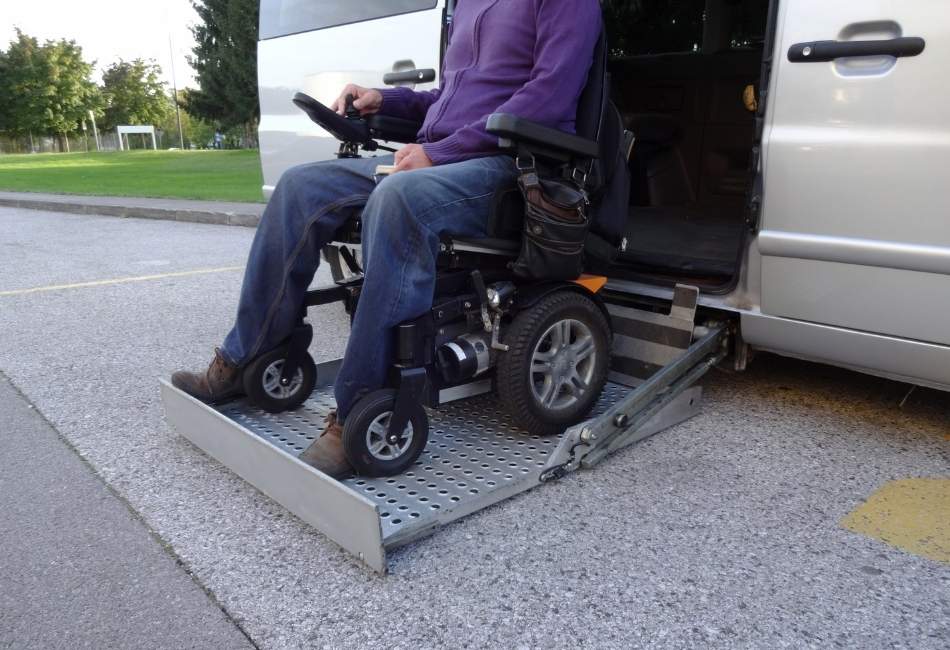A wheelchair may be required to help a family member with special needs or disabilities move around. However, because wheelchairs are often used to aid people with paralytic or degenerative medical conditions, you may be wondering if you need a prescription from a doctor before you can purchase one for your loved one.
You do not need a prescription for a wheelchair. However, if you plan on your insurance company covering the costs of the wheelchair, they may require you to obtain a prescription for wheelchair usage from your doctor.
In general, consulting the doctor is always recommended before investing in a wheelchair for your loved one. They can suggest various wheelchair options and determine which is most suitable for your needs and lifestyle demands. In this article, we will cover the instances you will need a prescription for a wheelchair and the benefits and caveats that come with them.

When Do You Need a Wheelchair Prescription?
As mentioned above, generally, you will not need to have a prescription to purchase and use a wheelchair. However, a wheelchair prescription is required if you want your insurance company to cover the costs of the wheelchair.
Why Do Insurance Companies Want You To Get A Prescription?
People generally will need prescriptions for wheelchairs because the cost of the wheelchair is going to be too much for that person to handle out of pocket.
Depending on a person’s insurance company, certain wheelchairs can be covered by an insurance policy. Insurance companies are more likely to want to cover wheelchair cases if the case makes them the most amount of money and is within the policy between the company and the person.
However, before covering the wheelchair, insurance companies may require the person to undergo an assessment by their doctor and receive a prescription for a wheelchair should the physician deem it necessary.
Because insurance is the primary reason you would need to seek out a prescription for a wheelchair, the remainder of this article will cover the benefits that come with using your insurance provider to help you cover the costs of a wheelchair.

How Insurance Can Help With Wheelchair Costs
One of the biggest challenges for special needs families is the additional cost to care for their child. Expenses can arise from:
- Ongoing equipment upgrades (as the child grows)
- Continuing special medications
- Specialty feeding tubes and formulas
- Surgeries
- Extended hospital stays
- Expensive testing / procedures z
Of course, these are just a few of the overall supplies and types of care a loved one with special needs or disabilities may require. Depending on the diagnosis, this list can become quite extensive—and expensive. Therefore, having an insurance provider that can cover some of these costs is critical for some families.
If you can secure a prescription for a wheelchair, your insurance company will more likely be able to cover some or most of the costs for it; this can lead to two main benefits:
Reduced Out of Pocket Costs
Paying a premium for health insurance means that your policy will eventually cover a certain percentage of the medical costs you incur, including the costs for purchasing and maintaining a wheelchair.
Whatever is left to pay out of pocket is significantly reduced, making buying the wheelchair less financially stressful for your family. This leaves you more room to invest in other medical needs for your loved one, such as any of the supplies and medications mentioned in the previous section.
Payment Plan Options
Most, if not all, doctors’ offices will work with patients and their families on their out of pocket payments if their insurance is already covering some of the fees; this could take the form of a payment plan, such as monthly installments for renting or buying the wheelchair. That way, you will not have to fork over a ton of money to grant your loved one mobility again.
Payment plans can be most beneficial if you can rent or purchase a wheelchair from a medical facility or specialized wheelchair provider. Ask your doctor if this is an available option through their clinic or if they could recommend you to a wheelchair manufacturer that also accepts payment plans.
Insurance companies, if they do not offer full coverage for the wheelchair, can also have payment plans set up as well. Like the doctor’s office, these payment plans can be set up so that the patient can afford the care they need.

Wheelchair Replacement Coverage
Having a wheelchair for a short or long period can mean that there is a chance that the wheelchair might become damaged.
However, there is no need to worry about the possible expense you would have to take on for a wheelchair replacement or repair. If the wheelchair becomes damaged for any reason, your prescription should allow you to get a new one, which would then be covered by your insurance.
For manual wheelchairs, replacing the chair is relatively inexpensive because the chairs are easily constructed, so insurance companies do not see this as a considerable loss. However, in contrast, motorized wheelchairs have many more moving parts; therefore, insurance providers will likely not cover the chair’s repair or replacement.
How Much Coverage Can You Get With Wheelchairs?
Typically, for a person on private insurance and/or government insurance, a person’s wheelchair’s costs will be less than paying out of pocket. But, there is a ton of red tape a person must go through to get the coverage. Mobility Advisor estimates that the insurance covers anywhere from 50-80% of the wheelchair costs.
Several factors go into how much coverage a person typically will receive for their medical bills when it comes to insurance. Insurance providers will usually consider the following:

How Long Is The Wheelchair Needed?
How long your loved one will need a wheelchair will depend on their condition and lifestyle needs.
The longer a person needs a wheelchair, the more the chair is going to cost. For simple procedures, using a wheelchair for a few days or a week will not cost too much. But, when you start needing a wheelchair for multiple months, the cost is going to rise.
Insurance companies will cover as much as they wish to do, but if an extended period of use is required, the insurance company can make a case that they do not need to cover the wheelchair expenses.
The main reason for this is that the type of wheelchair a person will need for more extended periods will be more customizable. The seat will most likely have a comfier cushion than standard chairs, along with other potential customizations that would allow the user as much comfort as possible.
Does The Use Of A Wheelchair Alter The Cost?
If a person can get by without using a wheelchair, their insurance and out-of-pocket costs will be generally cheaper. Other options for a person to use instead of a wheelchair include walking boots, crutches, casts, canes, and simple rest and recovery.
However, various conditions may require a wheelchair, including:
- Paralysis
- Musculoskeletal issues
- Broken bones or feet/leg injury
- Neurological disorders
- Balance or gait problems
- Inability to walk far distances
For some of these reasons, like paralysis or neurological disorders, a wheelchair will be a permanent function of a person’s life. Those people who need a wheelchair for an extended period or for life are going to have severe injuries or complications that do not allow them the opportunity to walk or walk without assistance.

For leg or feet injuries, or balance/gait issues, the wheelchair can be an excellent stopgap for people. The wheelchair allows them to move around without hindrance while they rehabilitate and regain their strength to walk again. The wheelchair takes the pressure off of the lower body’s everyday use, giving a person time for their injuries to heal.
Overall, most of the conditions listed above require a prescription for a wheelchair; this is because the conditions listed above, especially those that require permanent wheelchair usage, all require a wheelchair to be used. Doctors are more likely to prescribe wheelchairs for these patients because the patients need wheelchairs for their everyday lives.
With that said, insurance companies are more likely to cover wheelchairs in these cases because they know the person will need one. Insurance may also cover the costs because there are most likely treatments and frequent medical visits that will eventually add up in fees—resulting in them potentially making more money.
What Type Of Wheelchair Is Required?
Wheelchairs are great for people who require assistance to move around in their everyday lives. There are two categories of wheelchairs: manual and motorized.

Manual Wheelchairs
These are the wheelchairs that have been around for the longest time. With modern technology, though, the wheelchairs have been modified to be collapsible and more comfortable to maneuver around.
Manual wheelchairs can be modified to ensure that whatever activity a person will do, they can do it from their wheelchair. Some companies will add bigger tires to go off-road or on the sand at a beach. There are also modifications like adding a third wheel in the front and putting in hand pedals to make the wheelchair into a tricycle, along with many more.
Manual Wheelchairs and Insurance Coverage
For the most part, manual wheelchairs will not cost too much, with an average of about $500 according to Health Cost Helper. These wheelchairs will be the most basic and are typically used for a few days at most.
For wheelchairs that a person would need for everyday use, they will run anywhere from $1,000-$2,000. This price depends on a few factors, such as:
- Customizable seat
- Various wheel types and sizes
- Frame size and weight
For these specifications, there is more likely going to be a prescription needed for your insurance company. With any modifications of the wheelchair, the cost will rise, so having a prescription would allow the insurance company to cover some of those costs.
However, generally, insurance companies are more likely to require prescriptions for manual wheelchairs because they are more commonly used and prescribed compared to their motorized counterparts.

Motorized Wheelchairs
These wheelchairs with a motor are referred to as “power chairs” and are commonly powered by a battery that powers the chair’s wheels. A joystick attached to the arm of the wheelchair then operates the wheels and the overall movement.
Basic motorized wheelchairs are great for indoor use and paved surfaces, while customizable options are available for those who want to roll across rougher terrain or move up and down the stairs.
People who use motorized wheelchairs typically want to have independence in their lives while still using a wheelchair. They are also more likely to permanently use a wheelchair, and because of that, they often opt for a wheelchair that is less stressful to move about in.
Motorized Wheelchairs and Insurance Coverage
Power chairs will be a little more expensive because of the extra elements that come with them. On average, these chairs are around $1,200-$1,500 at the low end, with fully customizable power chairs getting up to $30,000. One study by the Archives of Physical Medicine and Rehabilitation found that the average power chair costs $7,132.
On top of that, users will usually incur extra charges because of the chair’s mechanical nature. For example, battery replacements should not occur too often, but they are going to happen, and they generally are not fully covered, if at all, by insurance. The cost generally ranges from $70 up to $450, depending on the type of chair and battery, with more advanced and bigger batteries at a higher price point.

To overcome these additional fees, look for a chair with a warranty covering everything that comes with it. Typically, the warranty will last anywhere from two years up to five years and will cover any costs for battery and tire changes, repairing mechanical issues, and any other problems from everyday usage.
However, motorized wheelchairs are less likely to be covered and prescribed for many insurance companies despite these warranties. The main reason is that most insurance companies, and doctors, believe manual wheelchairs are sufficient for most patients. The insurance companies also believe the costs of motorized wheelchairs are too much of a liability to cover completely.
For more information about which type of wheelchair has the most extended lifespan, you can read our guide to ”How Long Does A Wheelchair Last?”.

What Type of Insurance Covers Wheelchairs?
For those on Medicare or Medicaid, certain wheelchairs are covered and can be prescribed to the patient by their doctor. According to Medicare.gov, Medicare Part B covers power-operated vehicles (scooters) and manual wheelchairs as durable medical equipment (DME) that a doctor can prescribe to you for your home.
While the Medicare coverage covers those specific wheelchairs, a person’s supplier has to accept the assignment, and the person would pay 20% of the Medicare-approved amount. Once that happens, the Part B deductible applies. If the DME suppliers are not Medicare participants, there is no limit to the amount they can charge.
For DME, Medicare covers that in various ways, but it depends on whether the patient rents or buys the equipment. That determination can be done by a doctor, as renting DME most likely means that the patient will not be using the wheelchair for that long.
One significant concession is that Medicare will only cover DMEs if the doctor and DME suppliers are both enrolled in Medicare; if not, Medicare will not pay the claims. The doctors and suppliers have to meet strict standards to be enrolled in Medicare.

What If Insurance Does Not Cover Wheelchairs?
If your insurance company does not cover your loved one’s wheelchair, there are a few options you can try:
- Try to find a local free health care clinic near you. These are great places for families with lower incomes to find medical supplies like wheelchairs in addition to low-cost medications and treatment.
- Check second-hand stores. There are several websites you can use to search for inexpensive or free wheelchairs available in your area. The only downside is that these wheelchairs will most likely be used. However, they cost little to nothing, which can be a significant weight off your shoulders once you realize you just saved hundreds to thousands of dollars.
- Explore options on Amazon. Many people are surprised to hear that there are affordable wheelchair options available on Amazon. I bought this wheelchair on Amazon for my son over two years ago for occasional use, and we still have it today.
Final Thoughts
When a loved one with special needs or disabilities needs to use a wheelchair, it can be a stressful point in their life. Transitioning from walking to wheelchair usage can be difficult because people feel they are losing their freedom and mobility. But, wheelchairs can also give some mobility and freedoms back to a person if they otherwise could not move around.
Generally, you do not need a prescription to get a wheelchair. However, if you want to lower your out of pocket costs, it is worth getting one so your insurance company will more likely cover some, if not all, of the fees associated with owning one.
Although insurance companies require that people meet specific guidelines and complete a lot of paperwork before agreeing to cover wheelchair costs, any little bit helps, especially if there is the potential to save hundreds, if not thousands, of dollars in caring for your loved one.
